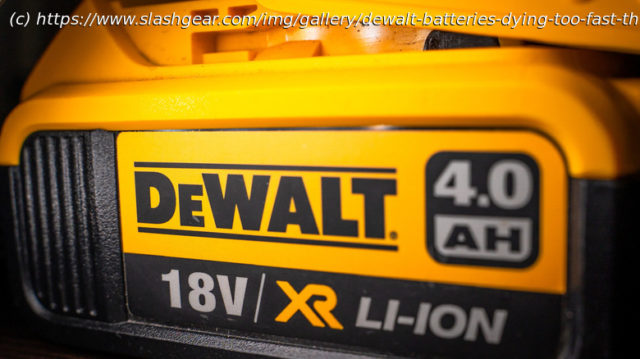DeWalt batteries die early when over-drained or charged while hot. Stop using them when performance dips and let them cool before recharging to preserve power.
We may receive a commission on purchases made from links.
There’s no doubt that the advent of cordless tools was a huge boon for both commercial and domestic power tool users. Freed from the shackles of dragging long extension cables everywhere or risking not having access to power, battery power revolutionized power tool use. However, the technology isn’t without drawbacks. Perhaps the most obvious downside is needing a supply of charged batteries. If you have a limited supply, it’s tempting to squeeze that very last drop of juice out of each one to optimize your work time.
However, the official guidance from DeWalt is that running a battery until it’s completely drained could damage it. DeWalt recommends that you stop using a battery the moment you detect a loss of performance from the tool. This prevents the battery’s voltage from dropping so low that adverse chemical reactions begin to damage its internal materials.
Draining a battery is often referred to as «deep discharging» and can cause significant degradation to its capacity. In the worst cases, the chemical reaction within the battery is so severe that the battery is damaged beyond repair. Of course, this isn’t the only reason a DeWalt battery can seem to die too soon. Heat, cold, storage, and bad charging practices can all be detrimental to a battery’s life. DeWalt batteries have some common problems, and to get the most from them, it helps to understand what else quietly chips away at their capacity.






